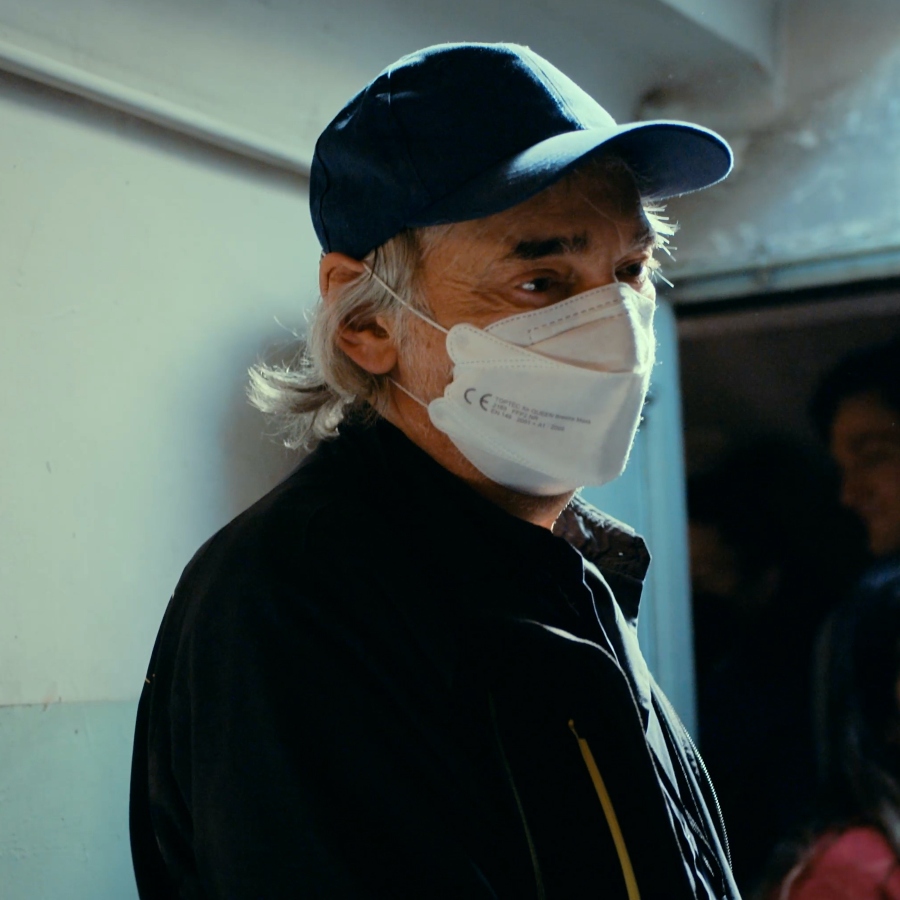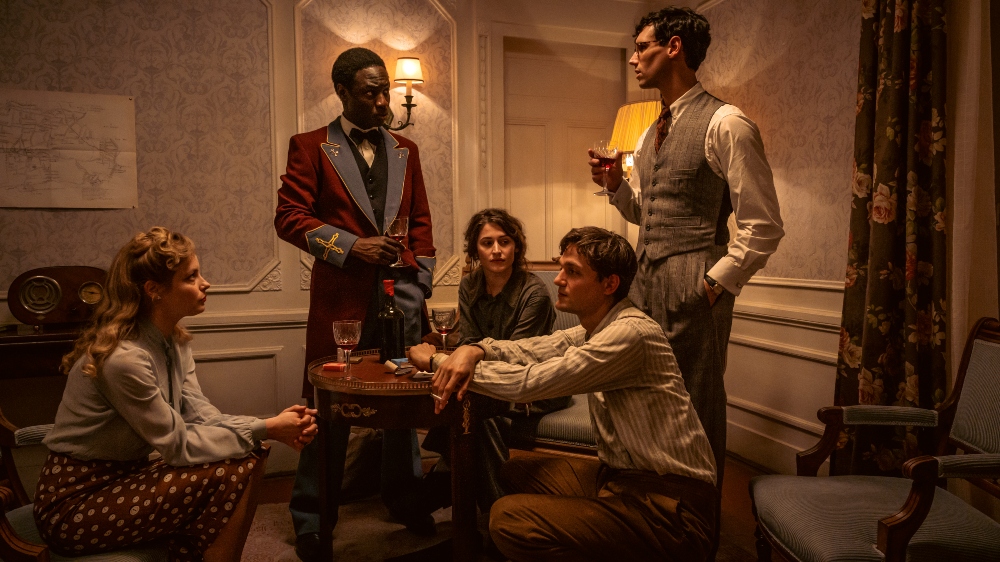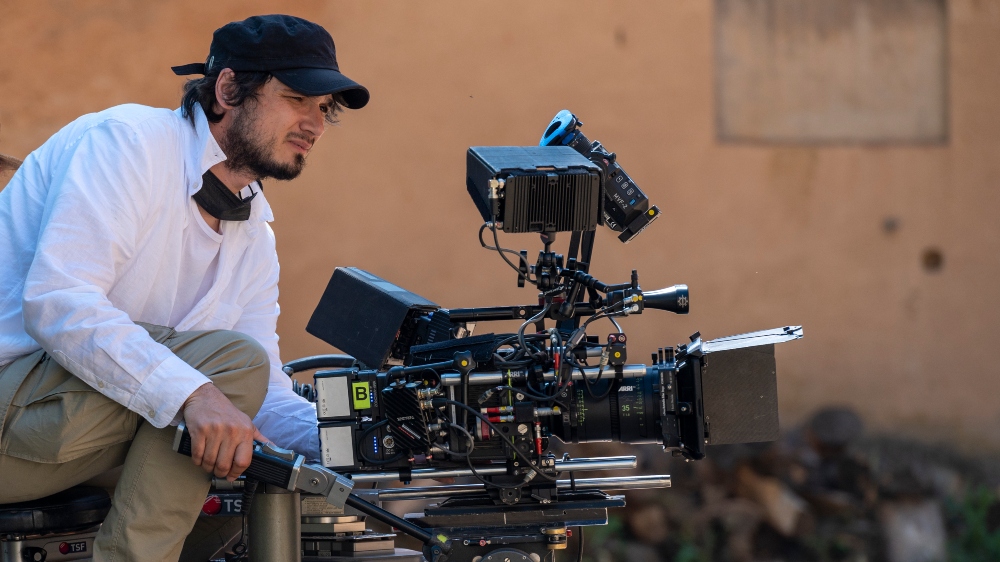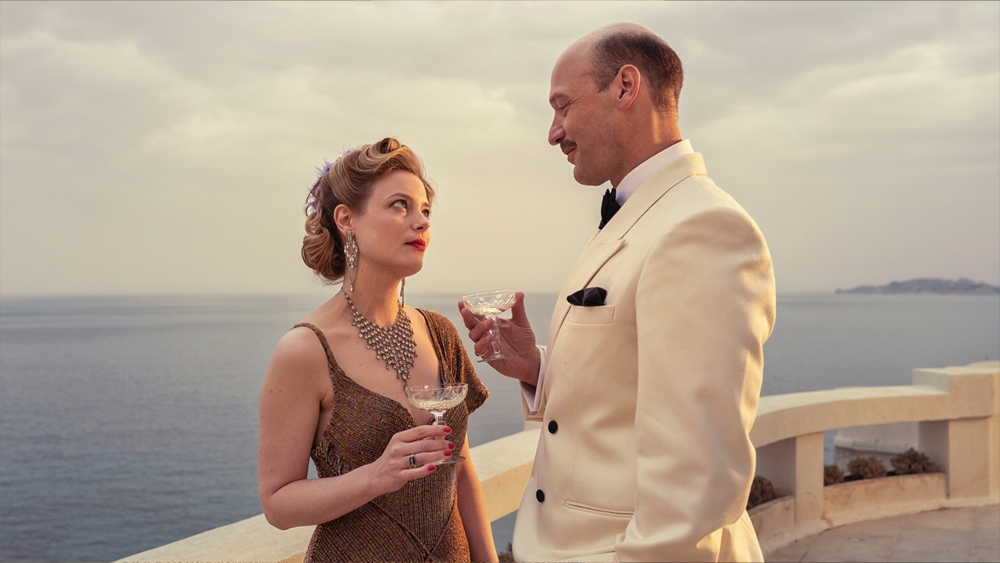Set in 1940, Netflix’s new limited series Transatlantic spotlights the heroic work of the Emergency Rescue Committee, which worked to help save artists and intellectuals from the Nazis after the fall of France during World War II. Based on real-life efforts, the series is a vivid story of perseverance and survival that has resonated with audiences around the globe.
Created by Anna Winger and Daniel Hendler and based on Julie Orringer‘s 2019 novel The Flight Portfolio, the series stars Gillian Jacobs, Lucas Englander, Cory Michael Smith, Ralph Amoussou, Deleila Piasko, Amit Rahav, Grégory Montel, and Corey Stoll.

Transatlantic features a very deliberate look that uses colors to signify connection and truly capture the time period in a way that feels fresh rather than forced. Directors of Photography Wolfgang and Sebastian Thaler worked together to make the show look just right, with the added challenge of doing it in HDR.
Below the Line spoke to the father-son duo, who frequently passed endearing compliments back and forth and tossed answers to each other while discussing their professional collaboration, which involved taking the reins on separate episodes and seeing Sebastian step in for his father when he got sick at one point during the shoot.
Below the Line: What drew you to this show?
Wolfgang Thaler: The story took place in 1940, and this is always a big challenge for DPs. We shot mainly at original locations, so it meant that we had to prepare together with the art department so that it looked like that era. The challenge is that you are very limited, sometimes, in blocking the actors and [the] angles of [the] camera, and all that stuff. And, of course, it is a very important story. It has to be told.
Sebastian Thaler: Especially today.
Wolfgang: The world forgot about Varian Fry, that he rescued more than two thousand Jewish intellectuals and artists. While other people also rescued a number of people and they are heroes, well-known throughout the planet, like Oskar Schindler, for example, this is what drew me to shoot Transatlantic.

BTL: The color palette is very intentional. Was that in the script, or was that one of your contributions to the show?
Wolfgang: Let me start, and then Sebastian can continue. It was not scripted. We had the freedom to create our style and our visual meaning and fantasy. For this, we wanted the show not to look very high-class, glossy, or digital. We wanted it to look like good film stock, good film material. Sebastian created his own lookup table, and he’ll tell you how that works. We agreed in the preparation for this show that we didn’t want to have these old-style, no-color images that should remind [audiences] of the 1940s because the world at that time was very colorful.
We created a very modern style from colors, which could remind [us] that it’s a historical piece with this deep blue color, the deep blue moonlight in the night. This blue color was very special, and it should symbolize the longing people have [who] were rescued from the Nazis. You only see this color on the seaside, not even the sky, and in the night.
Sebastian: Our approach was not to have these desaturated colors for a period piece. The manufacturers of digital cameras try to reproduce the real world in color, and it’s not often what the eyes want to see if you have it on a screen. My approach was to really analyze different film stocks to understand how the colors are rendered and influence each other in a frame.
This was transported to the show so that we have a modern look, but the audience can still get the feeling that it’s a period piece with modern art. The main goal was to reproduce the colors, but not in a modern way, referencing how people know it historically [and] how films looked, so this is the way that we wanted to present the show. It’s a period piece with modern elements in it.
Wolfgang: We didn’t know if our aesthetic would be accepted by our Showrunner, Anna Winger, or by Netflix. One week before shooting, we made a test and showed them how it looked. We had been a little bit nervous, but they loved the aesthetic, and they loved the color [of the] images, so we’ve been going for it.

BTL: It looked great on my TV. In terms of the technology, did you use a particular camera, and did you need to change what you were using based on different locations?
Sebastian: What was new for us was that this show needed to be delivered in HDR. That was a bit of a task to bring the film world to a modern HDR world. We only had that test screening a week before shooting, and then we all tried it out together to see how the HDR would look, how the light would look, how the colors would look, [and] if the grain was too much. It was important to us that, throughout the show, it stays constant — the look and the camera language. The camera style should be consistent throughout all seven episodes.
After the test, we all sat down with the directors and really started [our] final grade, to see if it works. What we developed out of this was an attempt to put away some contrast, add some color, [and] a different shade from the base look. We used that look on set so that everybody saw how it looked, with the costumes, whether the colors shine or not, and it also influences how you light.
For me — I don’t know how it was for you, Wolfgang — it was very important to see how the light reacts with the DI, because then you can treat it like in film stock — this is underexposed, this is overexposed, this color shifts in a certain way when you add LED lights. This is what you really get in the DI. It was important for us to have this look ready before the shoot starts, so the gaffer also knows how it behaves. You decide on a film stock and this is it, and everything is arranged around this look to really adjust the levels — the colors, the gels, and so on. That was quite important for us.
In my opinion, the HDR was very helpful because it transports the visuality and how your eyes see the world. It adds a bit of a modern style to it, in combination with the film emulation, to really bring a new look. For me, it looks like I’m looking through an image on a light table because you have deep blacks and high light values.
Wolfgang: I heard a few days ago that nobody in the U.S. is shooting HDR, Sebastian. Maybe the Europeans are keen to try it out because nobody has an HDR monitor at home. For me, it was a little bit more difficult to shoot in HDR because I am used to low light conditions. I love shooting with available light, and maybe bringing in some film light to support that. This was not possible for me anymore shooting HDR. But I like it, definitely.
Sebastian: Things work differently in HDR, and you really have to adapt and concentrate [so] that nothing blows out because it will look really bad in the final product. There were some challenges, and there was some rethinking for everyone — the Gaffer, especially. I think we managed it quite well, and I liked the result.

BTL: What is your working relationship like as father and son?
Wolfgang: It’s very harmonious. We know each other, we respect each other, [and] we appreciate each other, especially our work. We have a similar approach to the aesthetic feeling. We have been working together very often — me as a DP, Sebastian beginning as a Focus Puller, then Second Camera, and this was the first time we could share a show as independent DPs like that.
Sebastian: Also, to develop the look together and to exchange experience. To exchange ideas and share tasks. Wolfgang went to Marseille to get the first glance at potential locations there, and he was sending me pictures back, and then we talked about it. It was a constant sharing task, inspiring each other.
Wolfgang: It’s a constant learning situation. I am learning from the young generation, and maybe the generation learns something from my experience.
Sebastian: Of course.
Wolfgang: But the mixture of this, I love it. We never had really discussions about different approaches to something. It was very easy for Sebastian when I got ill. I got COVID and he took over my part, shooting block one for three weeks. I was completely done for that time, and nobody realized that he was continuing my work. I know what I get from him. We know each other very well, and this makes working together very easy, so we don’t have to explain what to do and how to do it. This, I appreciate very much.
Sebastian: Yeah, me too.
Transatlantic is now streaming on Netflix.





